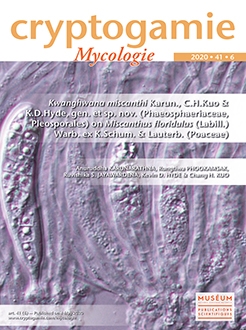We are studying microfungi growing on Poaceae hosts in different geographical regions and in this study we introduce Kwanghwana miscanthi Karun., C.H.Kuo & K.D.Hyde, gen. et sp. nov., based on phylogenetic analyses of DNA sequences of four loci used in combination (three ribosomal (LSU, SSU and ITS) and one protein coding region (TEF1-α)) and on morphological characters. This new genus, including a single species isolated from Miscanthus floridulus (Labill.) Warb. ex K.Schum. & Lauterb., is molecularly distinct from closely related genera, Neostagonosporella C.L.Yang, X.L.Xu & K.D.Hyde, Setophoma Gruyter, Aveskamp & Verkley and Edenia M.C.González, A.L.Anaya, Glenn, Saucedo & Hanlin. Kwanghwana miscanthi Karun., C.H.Kuo & K.D.Hyde, sp. nov., also differs from Neostagonosporella and Setophoma by having subglobose ascomata, irregularly thickened peridium, cellular, septate and branched pseudoparaphyses, and fusiform, broadly fusoid, 3-septate ascospores.
How to translate text using browser tools
4 May 2020
Kwanghwana miscanthi Karun., C.H.Kuo & K.D.Hyde, gen. et sp. nov. (Phaeosphaeriaceae, Pleosporales) on Miscanthus floridulus (Labill.) Warb. ex K.Schum. & Lauterb. (Poaceae)
Anuruddha Karunarathna,
Rungtiwa Phookamsak,
Ruvishika S. Jayawardena,
Kevin D. Hyde,
Chang H. Kuo
ACCESS THE FULL ARTICLE
It is not available for individual sale.
This article is only available to subscribers.
It is not available for individual sale.
It is not available for individual sale.

Cryptogamie, Mycologie
Vol. 41 • No. 6
May 2020
Vol. 41 • No. 6
May 2020
Dothideomycetes
graminicolous fungi
new species
Taiwan




